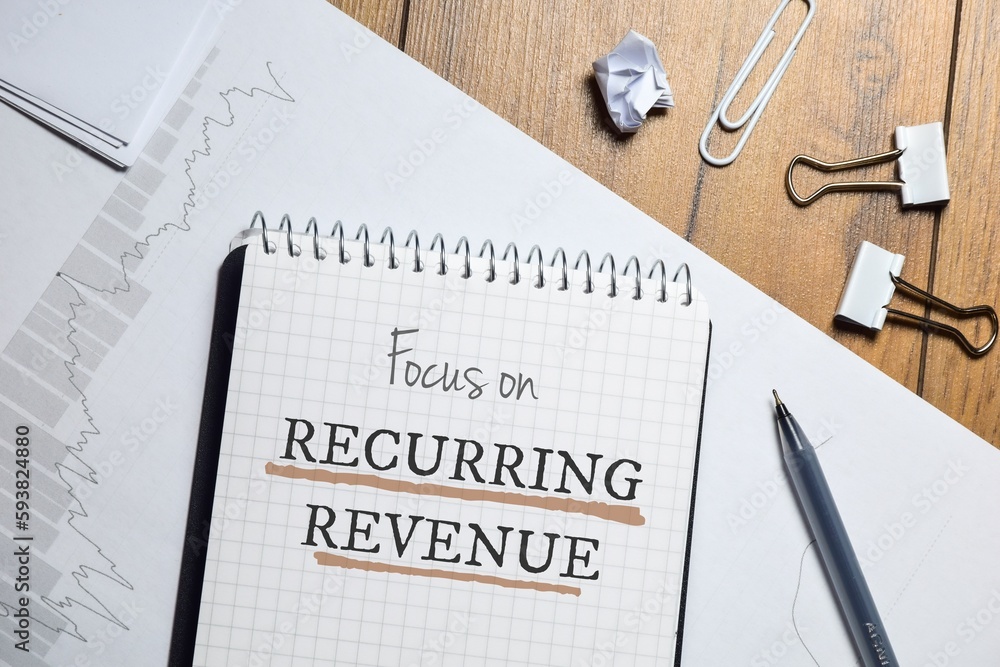10 Things You Need To Know About Your SaaS Valuation

There can be a number of factors that a potential buyer is looking for; customer acquisition costs, market share, scalability, and regulations surrounding the software the space is in. There is massive potential for selling a SaaS business.
Whether you are just starting out on your SaaS journey and want to plan ahead, or you are getting close to selling your business, we are here to show you 10 things that will make the process easier and help drive the value of your company up.
A Subscription Model Shows Stability

When someone is considering buying your SaaS business and the valuation, they want to know that the business is going to continue to be profitable.
Subscription models have gotten more and more popular over time, and people are used to adopting this payment structure. Companies like Netflix, Dropbox, Hulu, and a number of other businesses have helped the subscription model grow fast. Certain nonprofits are even utilizing this sales model rather than just trying to get one time contributions. SaaS software is perfectly positioned to operate on the subscription model.
One of the biggest strengths SaaS owners have when they are going through the valuation process, is that they can pitch the potential buyer on predictive income.
Think about this - many businesses have a product that they can sell a limited number of times. For example, a fitness company that sells Kettlebells sells weights to customers. However, someone only needs a few different weighted kettlebells. Then, they are done coming back to the company.
When you are valuating your SaaS company, you get pitch to potential buyers that they will have customers that are going to be coming back over and over again. You get to make monthly sales. Not only that, with this information, you can predict future revenue because you can look at how the number of subscribers has been growing over time.
Growth Metrics Show Your Companies Worth.

Many people can lay out a convincing vision for the future of the company and the success that a new owner will find. They can lay out future features that could be added. They can project that the market is going to continue to grow. However, if someone is buying a SaaS business and investing a lot of money, they want to know that they are actually going to profit from this acquisition.
You can valuate your company correctly and prove its worth by showing them the numbers. Numbers tell the real story of what is happening with the business behind the scenes. There are different metrics that are important to know when valuating your SaaS product.
- Monthly Recurring Revenue (MRR): This refers to ongoing revenue that comes in month after month. This is the predictable income that comes in each month.
Customer Acquisition Cost (CAC): This is how much it costs the business to gain a new customer. CAC factors in your marketing costs through things like social media and google ads. A good CAC is different depending on how much you sell your software for.
Churn Rate: Churn rate refers to how many subscribers are leaving your software per month. Every SaaS business loses customers. You can strengthen your position by trying to keep this number low.
Scalability Drives The Potential Up
There are a number of factors that influence scalability and understanding them as you are building your SaaS product is key to the future success in a sale. Some of the factors include:
- The profitability of the product: It may be a great product that many people are willing to pay for. However, if the margins are not right, the potential revenue is limited. It may cost a lot just to keep the product running which will make potential buyers hesitant.
How many people can the product serve: There are a lot of great products out there but there may not be an audience to buy them. When you are valuating your SaaS product, you want to be able to show that there are a lot of people out there who could still benefit.
New Products Have the Opportunity to Scale: This might sound obvious, but it is important to know that if you have created a new product that is solving a problem that has been around, there is massive potential. It is not bad at all to create a SaaS product that solves a similar problem as other SaaS Business. However, potential buyers could be drawn to a new way of doing things that is in the early stages of its adoption.
Pro-Tio
Market Saturation Affects The Value of Your Company

You do not have to get discouraged if there are other products already in the space you are targeting.
Here is the reality - There are ways to win no matter how saturated the market is.
One of the ways that you can stand out is by trying to be the best SaaS product in your space. There are always corners that we can create as SaaS entrepreneurs. There are always times that we can feel like our product is comparable to others and settle. However, by continually striving to have the best product possible and keeping a pulse on what other companies in your space are doing, you can set yourself apart when it is time to valuate your product for sale. Products with a high retention rate are an indicator that customers find a ton of value in your product. The strength of your SaaS product will come back to reward you as time goes on.
Another way to stand out in a crowded space is by developing a great marketing strategy. There are plenty of great products out there that do not get the attention they deserve. By figuring out how to market your Software and executing a clear strategy, you can help ensure success as time goes on. A potential buyer is not only buying your software. They are also buying its reputation and previous marketing results.
Market Saturation is definitely important to be aware of when valuating your SaaS product. Picking a niche that is underserved is a great place to start. However, you can win as competition grows over time in different SaaS spaces.
Making Sure Your Product Is Easily Adoptable Will Drive Your Valuation Up.
There are many business owners and people out there who will try subscribing to a new software. However, one of the biggest reasons people may not end up using the software is that it is going to take too much time and effort learning how to integrate it into their work. You can create massive value and retention by keeping a constant focus on making your product simple to learn and apply. Customer service, tutorial videos, and written guides are all helpful ways to help retain people who are trying to learn your product.
Sales Force is a great example of being intentional with helping people adopt their products. Amit Ashwini from DataDab says, “Rather than focusing on feature checklists, Salesforce made the software easy to use. The company also allowed customers to start small and scale up as adoption grew within their organizations.” They could have made it have all kinds of features to start out but they found success by keeping their new customers in mind. They also created a way for people to use more of the software as their organization implemented it. The article also states that Sales Force’s market cap is 208 Billion. Not bad…
A potential buyer is going to want to see that the software was designed with the customer in mind. They are going to want to see that the SaaS product has been successfully implemented and had returning customers over time.
Pro-Tio
Proprietary Technology and Trademarks Raise the Valuation

When people create a SaaS product and form a business around it, focusing on trademarks and patents are not usually at the top of the list of the exciting parts about being an entrepreneur. It is way more fun to build a vision, create a product, and watch it grow. However, focusing on the legalities of proprietary technology can make you way more money in the long run. PatentPC explains this well in their article about proprietary technology by saying, “But proprietary technology goes beyond just being a unique product or service. It’s about having something so valuable that it catapults a company into a position of market dominance or, at the very least, gives it a significant advantage. It’s the technological equivalent of finding a treasure chest in a vast ocean that only you have the map to.” Proprietary technology can be a game changer and draw potential buyers to you. Companies will sometimes buy a business solely for the proprietary technology.
A great article from PatentPC explains it further, “This exclusivity is protected legally through patents, copyrights, and trademarks, ensuring that the innovation remains under the company’s control.” Patents, copyrights, and trademarks are all extremely important to know about as you design and develop your software. Imagine creating an amazing SaaS product that draws all kinds of customers but not having the legal protection from other people recreating it.
The legal side of proprietary technology is complicated but it can add massive value and increase the valuation if you do the hard work up front.
Understanding and Using Multiples will help your Sale Value
Tim Smith from Investopedia explains the basic idea well saying, “The multiples approach is a valuation theory based on the idea that similar assets sell at similar prices. It assumes that the type of ratio used in comparing firms, such as operating margins or cash flows, is the same across similar firms.” Multiples is not an exact way to tell what a company should be perfectly valued at, but it helps compare how a company is actually doing as they mention later in the article. They give a great example of different banks and how they compare to each other.
What this means for you - a potential buyer is not only going to look at your product. It may be doing well and there may be a lot of potential. However, they are going to look at how it compares to other businesses that are in the same space. If your product is similar, but not nearly as profitable or it is struggling in a key financial area, it could hurt the valuation. By keeping an idea of how other companies in your space are doing and by trying to be efficient in all areas, you can drive your value up and help close a deal with a potential buyer.
What this means for you
Your Leadership Team can Help the Valuation

When you, and potentially your team, developed and built the company, you learned valuable lessons along the way. You have the company history and know why certain features were added. Not only this, but you already will have a relationship with your customers and have a pulse on why they love your product.
Offering a Free Version of your Software can drive the Valuation Indirectly.
They have a free version where people are able to have video calls for under 40 minutes. A free version is not the best idea for every SaaS product out there. However, it is perfect for Zoom. Plenty of people have used their platform for shorter meetings and learned how to use it. Then, they upgraded to a paid version when they needed longer meetings and knew they could trust the platform.
One of the hard decisions that you will have to continually revisit is what your monthly subscription cost will be. There is not a perfect formula and may take time to find the right price point. However, offering a free version can lead to more revenue than only paid memberships.
The regulatory environment is an important factor in Valuation
This can be really important for SaaS developers to understand for two main reasons
- We have to make sure that our products are compliant with laws and regulations
New regulations could be put into place changing the ability for your SaaS to function.
There are plenty of examples of SaaS companies that are currently having to deal with this. Social media apps have issues with what they are doing with people’s personal data. Messaging apps can have all kinds of issues if there is the potential that it is being used in illegal ways. This is not going away. However, there are ways that you can set yourself up to navigate this more easily in the future.
Here are a few questions you can ask yourselfHow am I guarding user’s personal data?If I am selling to advertisers, what information am I giving that could be problematic?Have there been any lawsuits with similar companies?Am I transparent with my subscribers?Is my product genuinely improving the customers' lives and helping them solve a problem?
- How am I guarding user’s personal data?
If I am selling to advertisers, what information am I giving that could be problematic?
Have there been any lawsuits with similar companies?
Am I transparent with my subscribers?
Is my product genuinely improving the customers' lives and helping them solve a problem?
These 10 things will definitely help you as your are building your SaaS company. Whether you are just getting started, or have been selling your software for years, you can add huge value to your valuation by being intentional. Plenty of people have sold their SaaS company and the sky is the limit for those who are willing to work hard and plan ahead with a goal in mind.






